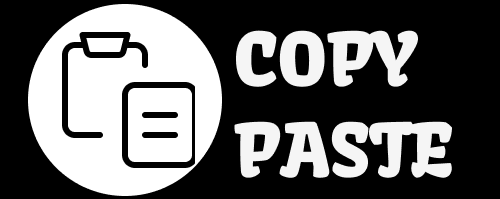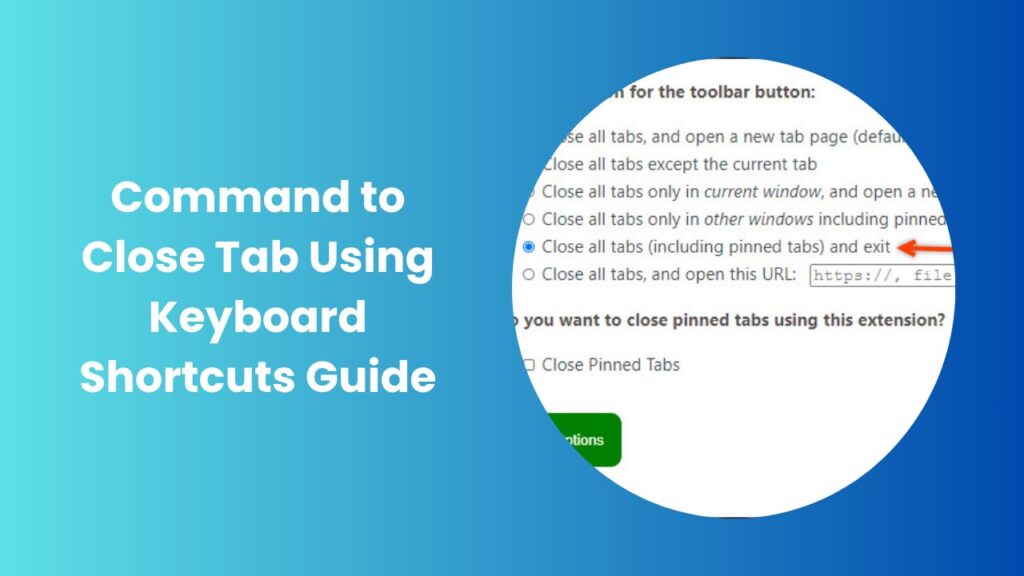In today’s fast-paced digital environment, even small actions can influence your overall productivity. One such simple yet powerful action is learning the right command to close tab. While it may seem trivial at first, the ability to shut a tab instantly without breaking your workflow adds efficiency to your daily tasks. Whether you are researching multiple topics, managing business projects online, or switching between entertainment and work, knowing the proper command saves both time and unnecessary effort. Instead of dragging your mouse to click on a small “X” button, a quick key combination streamlines the entire process. This is particularly important for people who juggle dozens of tabs at once, where every second counts.
Understanding the command to close the tab is not just about speed it is also about focus and control. A cluttered browser full of unnecessary tabs can cause confusion, slow down your computer, and make it harder to find the information you really need. By applying the right shortcut, you can clear the digital noise, stay organized, and concentrate on what matters most. For students, professionals, or anyone who spends significant time online, this small step can greatly enhance productivity. Over time, it becomes second nature and transforms into a valuable habit that keeps your online experience smooth and efficient.
Why Closing Tabs Quickly Matters
Closing tabs quickly is more than just a matter of convenience; it is an essential part of effective digital organization. When too many tabs remain open, your computer can become sluggish, and your attention can easily get scattered. This situation often leads to wasted time searching for the right tab or revisiting the same pages multiple times. By learning shortcuts, you regain control over your browsing environment and avoid unnecessary clutter.
Another reason it matters is that closing tabs quickly reduces distractions. Having only the relevant pages open allows you to maintain focus on the task at hand. This is especially useful for remote workers and students who need concentration to complete assignments and projects. A clean workspace whether physical or digital always enhances clarity and performance. Understanding why closing tabs efficiently is so important gives more meaning to mastering the technique itself.
How Keyboard Shortcuts Improve Productivity
Keyboard shortcuts play a vital role in boosting productivity. They are designed to minimize extra movements, allowing you to complete frequent actions without relying on the mouse. When applied consistently, they reduce interruptions in your thought process and help you maintain a steady workflow. For example, instead of moving your hand away from the keyboard to click, a simple shortcut ensures you stay fully engaged with the content you are working on.
Over time, this practice saves countless minutes that add up into hours. This is why professionals who regularly work with computers strongly recommend mastering shortcuts. They are not just tools for tech-savvy users; they are universal time-savers that benefit anyone who spends time online. By incorporating these commands into your routine, you create smoother navigation, less strain, and a more efficient digital work environment.
The Role of Different Operating Systems
Operating systems are not identical, and each handles commands differently. What works on Windows may not apply to macOS or Linux, and this can confuse users who frequently switch between devices. Knowing the specific combinations for your operating system ensures that you always have the right command ready, no matter which platform you are using.
This variation highlights the importance of adaptability. Windows users rely heavily on the Ctrl key, while macOS users use the Command key, and Linux users follow patterns similar to both but with occasional unique adjustments. Understanding these differences saves frustration and helps you transition smoothly between environments. For professionals working in cross-platform setups, this knowledge is not optional—it is essential.
Windows Shortcuts Explained
Windows is the most widely used operating system, and its shortcuts are designed to be straightforward. Typically, commands involve the Ctrl key combined with a letter or number, which makes memorization easier. Closing tabs in browsers like Chrome, Edge, or Firefox follows a consistent pattern, which helps users build confidence quickly. Once you practice enough, it becomes second nature to close tabs instantly without thinking twice.
Another advantage of Windows shortcuts is that they are consistent across most applications, not just browsers. This uniformity means once you master them, you can apply the same logic to other programs as well. It is a small learning investment that pays off significantly in the long run.
macOS Shortcuts Explained
For Mac users, the Command key replaces the Ctrl key, which can feel unusual to people transitioning from Windows. However, once you get used to the placement and feel of the keys, it offers the same efficiency. Safari, Chrome, and other browsers on macOS all respond reliably to these shortcuts, making it possible to work at speed without using a trackpad or mouse.
The real benefit comes from consistency. Apple’s design philosophy ensures that the Command key dominates most shortcuts, creating a uniform system across applications. This means you do not have to relearn every command when switching tasks. Once the habit forms, Mac users enjoy quick, reliable, and intuitive tab management.
Linux and Alternative Platforms
Linux distributions are known for flexibility, and the shortcuts for closing tabs follow similar logic to Windows and Mac. While desktop environments may introduce slight differences, the general combinations remain familiar. This makes it easier for users who move between platforms regularly.
Another aspect of Linux is its open-source customization. Advanced users can reconfigure shortcuts according to preference, giving them complete control over their digital navigation. Whether using Firefox, Chromium, or other browsers, Linux ensures you can manage tabs with the same ease as other systems.
Command to Close Tab Across Popular Browsers
Every browser supports its own version of the tab-closing command, but the basics are almost always the same. Chrome, Firefox, Edge, Safari, and Opera follow familiar patterns, which means learning the shortcut once usually works everywhere. However, browsers also allow flexibility by offering menu options and sometimes extension support for users who want more control.
Understanding how this works in your chosen browser ensures a smoother experience. While the default shortcut remains the fastest method, knowing backup options can be useful when shortcuts fail or when working on devices with different layouts. The goal is to create familiarity so that no matter what browser you are on, you can navigate tabs quickly and without hesitation.
Advanced Tab Management Tips
Closing tabs is just the beginning of smart tab management. Advanced users often take advantage of features that allow closing multiple tabs at once, reopening closed tabs, or grouping related tabs together. These techniques go beyond basic navigation and provide a higher level of organization.
Many browsers even offer built-in tools to save entire tab sessions, so you can continue your work later without leaving unnecessary pages open. When combined with shortcuts, these tools create a balanced browsing environment that supports both productivity and system performance. Over time, mastering these additional features ensures that your workflow is smooth, organized, and distraction-free.
Reopening Accidentally Closed Tabs
Closing the wrong tab happens often, especially when multitasking. Fortunately, browsers offer a quick way to reopen the last closed tab, making it easy to recover lost pages. This feature ensures that accidents do not interrupt your work or research. Once you know the shortcut, you can fix mistakes instantly.
Managing Entire Windows
Sometimes, you need to shut down more than one tab at once. Commands for closing entire windows filled with multiple tabs exist for this very reason. Instead of closing each tab individually, you can shut everything in seconds. This method is particularly helpful when you finish a project and want to reset your workspace quickly.
Using Extensions for Better Control
Extensions give advanced users more power over tab management. From grouping tabs automatically to optimizing memory usage, these tools extend the functionality of browsers. However, while extensions add convenience, shortcuts remain the fastest and most reliable method. A combination of both creates a balanced approach that keeps browsing efficient.
Common Mistakes and How to Avoid Them
Adopting shortcuts can feel awkward at first, and mistakes are common. One of the biggest errors is pressing the wrong combination, which may trigger unintended actions like reopening a closed tab instead of closing the current one. This can be frustrating, but practice helps reduce errors over time.
Another common mistake is forgetting the difference between operating systems. Windows and Mac commands look similar but require different keys. Confusion between the Ctrl and Command keys often leads to incorrect inputs. With regular practice, these mistakes fade, and users gain full confidence in their ability to manage tabs effectively.
Why Learning Shortcuts Benefits Everyone
Mastering shortcuts is not limited to IT professionals or advanced users. Anyone who spends time online benefits from learning these commands. Students working on assignments, professionals handling projects, and casual users browsing for leisure all gain efficiency and comfort by applying shortcuts regularly.
The universal benefit comes from the reduction of distractions and increased focus. With fewer clicks and smoother navigation, you spend more time engaging with content and less time managing it. This small improvement, repeated daily, contributes significantly to overall productivity.
FAQs
What is the fastest way to close a tab?
The quickest method is using the correct keyboard shortcut, which is faster than relying on a mouse click.
Can I customize the command for closing tabs?
Yes, many browsers allow customization through extensions or settings, giving you shortcuts that suit your needs.
What should I do if I accidentally close an important tab?
You can restore the last closed tab instantly using a shortcut or by checking your browser history.
Do mobile devices have commands for closing tabs?
Mobile devices use touch gestures like swiping or tapping an icon, instead of traditional keyboard shortcuts.
Are there risks in closing multiple tabs at once?
Yes, you may lose unsaved work if you shut many tabs quickly, so it’s best to check before closing them.
Why is learning commands better than using a mouse?
Shortcuts save time, reduce hand movement, and improve navigation speed compared to clicking with a mouse.
Can using commands improve my productivity significantly?
Yes, consistent use of shortcuts saves time and keeps you more focused on important tasks.
Conclusion
Learning the command to close tab may appear like a small skill, but its impact is far-reaching. With just a few keystrokes, you gain control over your digital environment, eliminate distractions, and save valuable time. In an era where online multitasking is the norm, efficiency becomes the defining factor in productivity. By applying this command consistently, you keep your browsing experience smooth and organized.
The real benefit lies not only in speed but also in focus. Every unnecessary tab you close removes a distraction and brings you closer to achieving your goals. Whether you are a student, professional, or casual user, mastering this skill ensures you can navigate the internet with ease and confidence. Over time, the habit becomes second nature, empowering you to manage your digital space with precision and clarity. In short, the ability to quickly close tabs is a cornerstone of efficient browsing and an essential step toward digital productivity.





